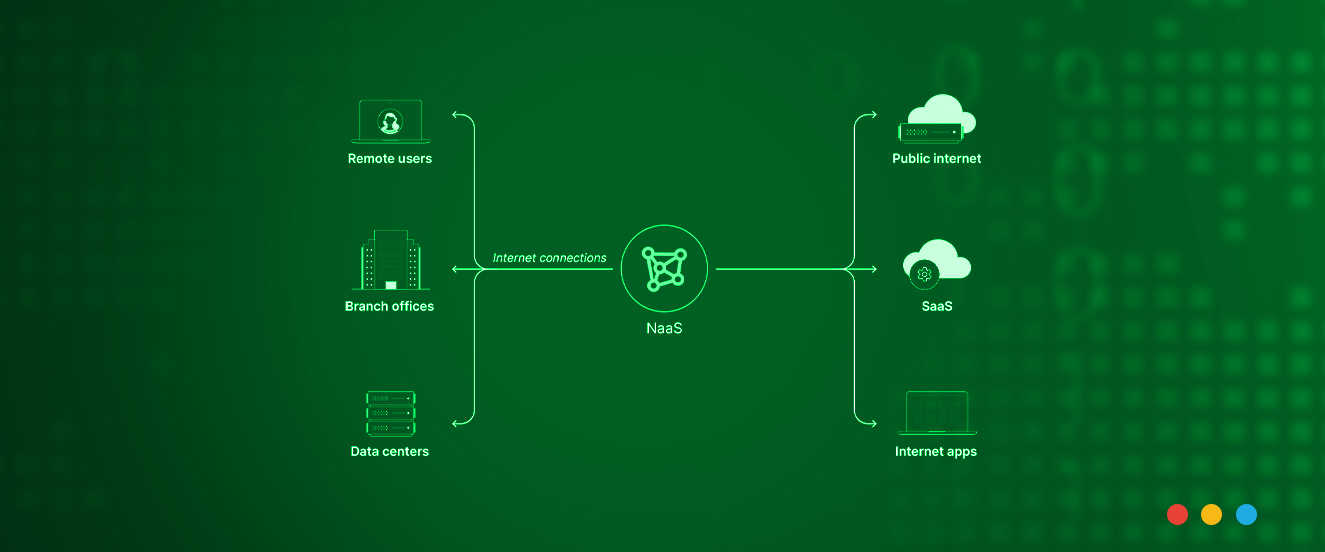
Network-as-a-service (NaaS) is a cloud service model in which customers rent networking services from cloud providers. NaaS allows customers to operate their own networks without maintaining their own networking infrastructure. Like other cloud services, NaaS vendors run networking functions using software, essentially allowing companies to set up their own networks entirely without hardware. All they need is Internet connectivity.
NaaS can replace virtual private networks (VPNs), multiprotocol label switching (MPLS) connections, or other legacy network configurations. It can also replace on-premise networking hardware such as firewall appliances and load balancers. A newer model for routing traffic and applying security policies, NaaS has had a major impact on enterprise networking architecture.
Flexibility: Cloud services offer more flexibility and greater customization. Changes are made to the network via software, not hardware. IT teams are often able to reconfigure their corporate networks on demand.
Scalability: Cloud services like NaaS are naturally more scalable than traditional, hardware-based services. Enterprise NaaS customers can simply purchase more capacity from a vendor instead of purchasing, plugging in, and turning on more hardware.
Access from anywhere: Depending on how a cloud-based network is configured, users may be able to access it from anywhere — and on any device — without using a VPN, although this introduces the need for strong access control. Ideally, all a user needs is an Internet connection and login credentials.
No maintenance: The cloud provider maintains the network, managing software and hardware upgrades.
Bundled with security: NaaS makes it possible for a single provider to offer both networking services and security services like firewalls. This results in tighter integration between the network and network security.
Cost savings: This advantage depends on the vendor. However, purchasing cloud services instead of building one's own services often results in cost savings: cloud customers do not need to purchase and maintain hardware, and the vendor already has the servers they need to provide the service.